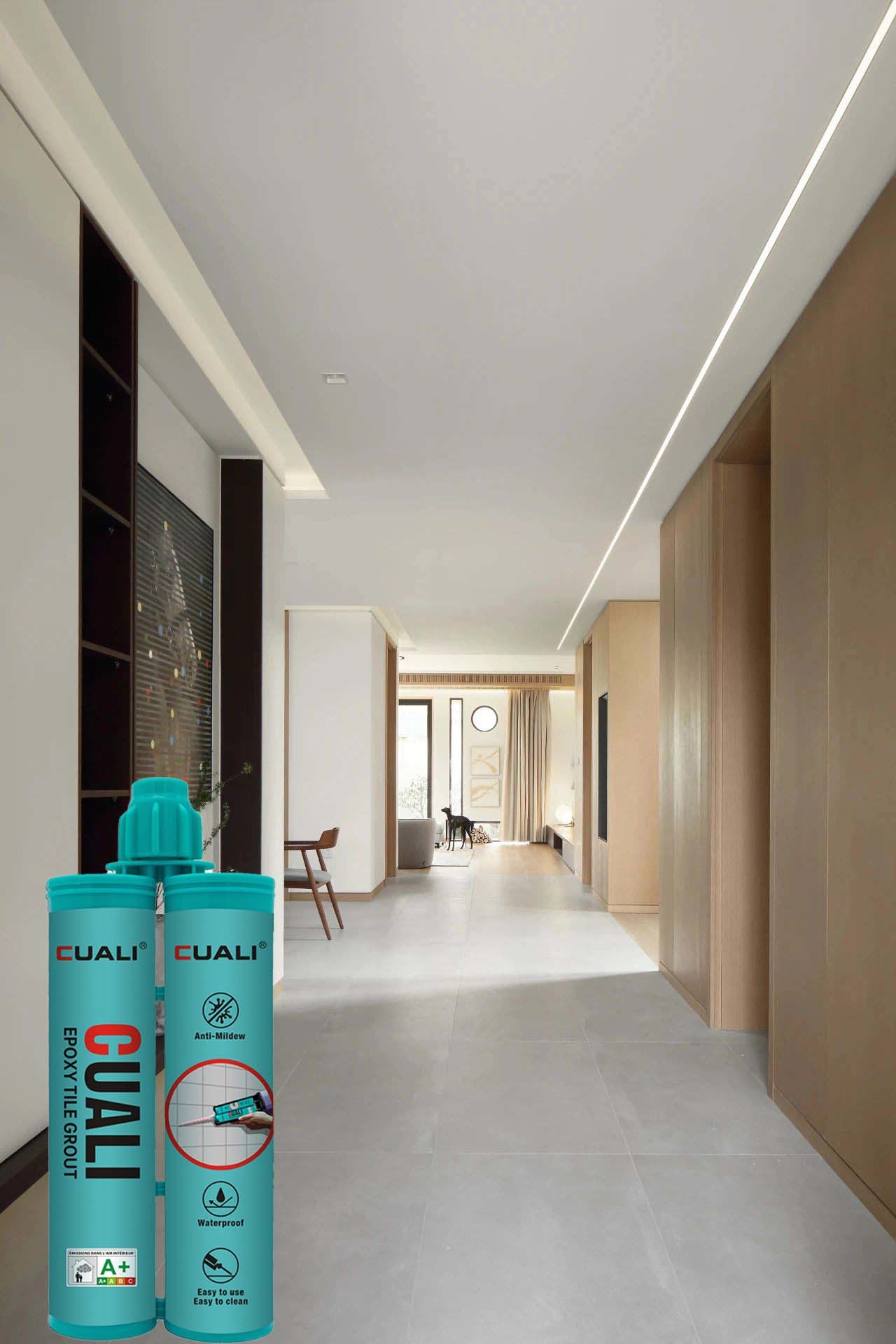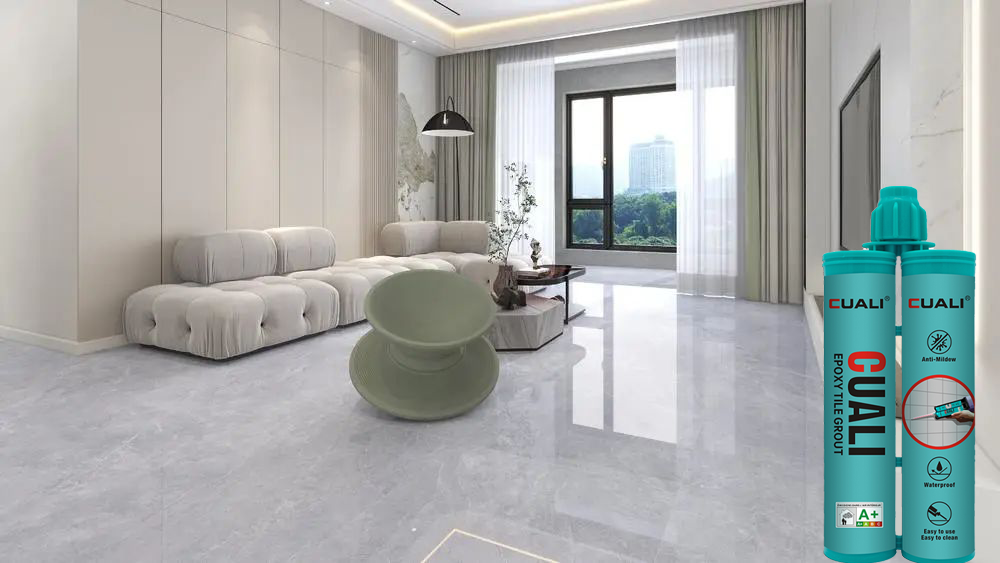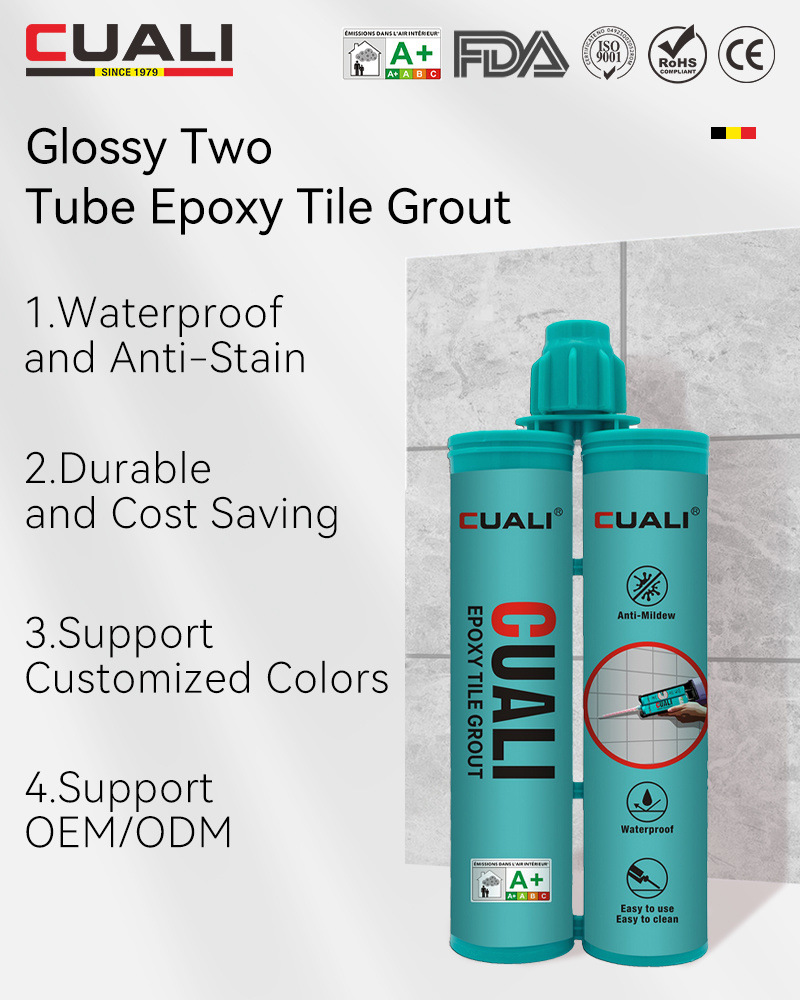
Choosing the Wrong Grout Ruins the Whole House Renovation?
No matter how expensive your tiles are, a bad grout job can instantly make your whole house renovation look cheap! Recently, many homeowners have been asking: Why does my grout keep cracking or turning yellow and black shortly after application? Today, we’ll show you how to avoid 5 "disaster" pairings, save money on rework, and keep your home looking high-end!
01 Polyurea Sanded Grout
This "big brother" of grouts has no "discoloration genes"—it won’t yellow even under direct sunlight, easily outperforming regular epoxy grout!
- Pros:
✅ 50-year yellowing resistance: Balcony sun exposure or kitchen heat? No problem! Safe to use with white or light-colored tiles.
✅ Can be applied at -10℃: Works even in damp winter corners, cures quickly, bonds tightly, and is waterproof and mold-resistant—super hassle-free!
✅ Flexible and crack-resistant: Handles floor heating’s temperature changes without breaking, so tile joints never fall off!
- Cons: Slightly more expensive than regular grout (but saves money on rework in the long run!). Cures very fast—requires two people to work together; not ideal for slow hands.
- Best for: Balconies, kitchens, bathrooms—works throughout the house! Highly recommended with light-colored tiles + white polyurea grout for a timeless look that lasts 10 years.

02 Cement-Based Grout
Choosing the wrong cement-based grout is like building a luxury home for mold! Made of white cement mixed with quartz powder, it’s extremely cheap but comes with fatal flaws:
- A water-absorbing black hole! In kitchens or bathrooms, it soaks up moisture instantly and grows mold like crazy.
- Brittle as glass! Cracks easily with temperature changes, letting water seep into the mortar—your downstairs neighbor will be knocking for compensation!
- A dirt generator! Turns black in 3 months, and no amount of scrubbing can save it.
- Best for: Dry balconies + wood-pattern tiles in bedrooms (a budget backup—keep it away from water!).
- Warning: Never use it in bathrooms/kitchens! Even the best waterproofing can’t stop leaks through the cracks!
03 Ceramic-Like Grout
Ceramic-like grout is the "budget hero" of renovations, but using it in the wrong place turns it into a "disaster scene"! Its core formula is a winning pair: epoxy resin (acts like super glue for bonding) + hardener (turns joints as hard as ceramic).
- Pros:
✅ Wallet-friendly! The cheapest in the grout world—saves enough for N cups of milk tea.
✅ Ultra-smooth surface—soy sauce or coffee stains wipe off easily, perfect for lazy cleaners!
✅ Easy to apply! Even beginners can use a glue gun: squeeze, press, done!
- Cons: Direct sunlight = yellowing alert! Balconies or windowsills turn into "yellow seams" over time, ruining the look. Low shrinkage is risky—can separate from tiles with heat/cold, so use cautiously in damp bathrooms.
- Best for: High-gloss tiles (matches their reflective texture, shining beautifully under lights!) and dry bedrooms (avoid wet areas + UV light, and it’s a cheap, worry-free choice!).

04 Epoxy Sanded Grout
Epoxy sanded grout is the "ultimate partner" for tiles! It’s top-tier at waterproofing and mold resistance—stays black-free in wet bathroom areas for 10 years. Its bonding power is incredible, gripping tiles so tight that even 5 years of heavy foot traffic in the living room won’t make it crack. And it’s affordable—great for budget shoppers!
But a heads-up for design lovers: It hates sunlight and dirt! Balconies exposed to sun turn into "yellow seams" quickly, and light-colored versions show dust easily.
- Advice: Stick to bathrooms + living rooms—never use it on balconies! This one tip saves tens of thousands on renovations!

05 Hydrogenated Sanded Grout
Still struggling with yellow, moldy tile joints? Try hydrogenated sanded grout—it’s way better than regular grout! Its hydrogenated bisphenol A resin technology locks in anti-yellowing properties, staying bright white even after 6 months of UV exposure. Kitchen oil or bathroom moisture? No problem! It has Class 0 mold resistance and a water-repellent formula—wipes clean easily, even in humid southern climates.
Even better: 76 colors available! From cream styles to wabi-sabi aesthetics, colorists match tiles 1:1, making seams "invisible". But note: Poor craftsmanship can cause slight oxidation in dark colors (it’s not as good as polyurea), but avoiding sunlit areas fixes this.
- Pro tip: Choose big-brand hydrogenated sanded grout (e.g., Zhongzhuo, Van Gogh) made with calcined sand + hydrogenated resin—avoid dyed sand! Clean excess grout during application for a smooth, stunning finish.
Summary:
This article introduces 5 common grout types (polyurea sanded, cement-based, ceramic-like, epoxy sanded, hydrogenated sanded), detailing their pros, cons, and suitable scenarios to help homeowners avoid "disaster" pairings and choose the right grout for their renovation.
Time:
2025-08-20
More News
